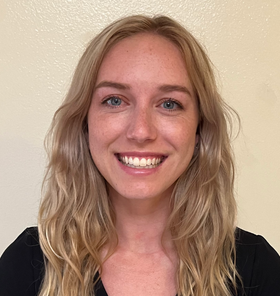Treatment - Mindfulness & Acceptance
(PS12-B36) Virtual Administration of Group Acceptance and Commitment Therapy (ACT) for Youth with Chronic Illness

Valerie S. Sommer, B.S.
Graduate Student
University of La Verne
Culver City, California
Danielle Berman, M.S.
Graduate Student
University of La Verne
La Verne, California- JN
Jada Newkirk, B.A.
Graduate Student
University of La Verne
La Verne, California 
Nicole E. Mahrer, Ph.D.
Faculty
University of La Verne
La Verne, California
Author(s)
Youth with chronic medical conditions need effective and accessible interventions to address higher levels of disruption in their psychological, social, and emotional development. Acceptance and Commitment Therapy (ACT) is a behavioral intervention that combines the principles of Relational Frame Theory and Mindfulness and has been shown to be effective in populations of youth with various chronic conditions. As telehealth use has increased, ACT has been administered virtually on an individual level to adults and adolescents with chronic conditions, including chronic pain and Type II diabetes. However, few studies have incorporated a group-based element to the virtual delivery of ACT which may be more cost-effective and have additional therapeutic value in the form of peer connection. To investigate the potential benefits of a virtual group model, we developed a web-based group ACT intervention for youth with chronic illness aged 14-21. The 6-week virtual group consisted of 1.5-hour sessions that each focused on a unique ACT concept: acceptance, values, mindfulness, cognitive defusion, experiential avoidance, and willingness/commitment and included exercises to engage group members and teach skills. We collected pre, post, and follow-up data on stress, mental health, functional outcomes, and satisfaction from one participant, “Kasey”, a 14-year-old Latina adolescent with comorbid Type I diabetes, depression, and anxiety. This poster details the procedures for the virtual ACT group, discusses the barriers to virtual ACT, and provides examples and recommendations for future administration of the group model. Finally, the poster describes Kasey’s experience during the group and presents quantitative data supporting her improvement. Kasey’s perceived stress declined across sessions from high perceived stress at pre, to within the moderate stress range at post and even closer to the low stress range at follow-up. Anxiety and depression improved from moderate concern at pre to within an acceptable/mild range at post which was sustained at follow-up. Peer relations improved from significant concern at pre to acceptable/mild concern at post and were sustained at follow-up. Mobility, pain interference, and fatigue remained at an acceptable/mild level throughout. During the ACT group, Kasey identified her most important values as being good to her family and being emotionally strong. She consistently met weekly goals to spend more time with her sister and practice the strategies presented in group such as mindfulness and “thanking her mind” (cognitive defusion). Kasey remained honest throughout the group about what she liked/did not like, moved toward her values, and identified sources of support to help her continue with the ACT methods after the group was over. She was initially shy about showing her face on camera, but slowly lowered her camera throughout the group such that her full face was on screen during the last session. This case study provides promising data for the virtual administration of a group-based ACT intervention. We hope that other clinicians can use this approach to provide evidence-based services that can reach a wider range of youth with chronic illness who may not have access to care or are estranged from their peers.

